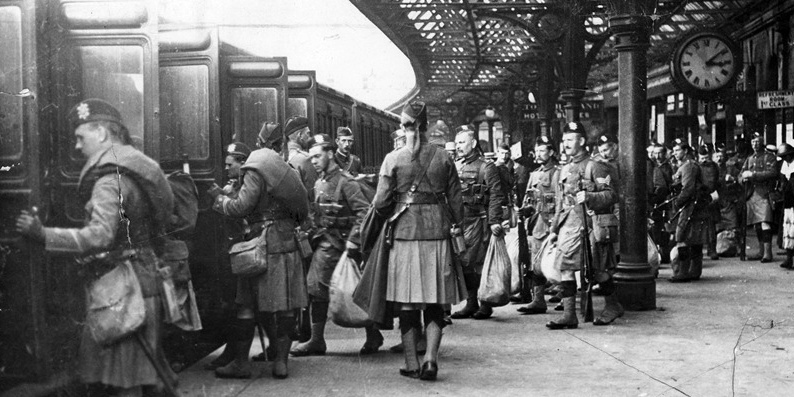The ranks of friends from Tayside and Fife who perished during The Black Watch’s darkest day will be remembered in Dundee this weekend.
More than 1,100 officers and men died during the Battle of Loos, which began on September 25, 1915. Most of these were neighbours, friends or relatives and their loss left a social chasm that has taken generations to bridge.
This weekend, The Black Watch Association in Dundee will begin the first of a series of commemorations in the run-up to the 100th anniversary.
Association members will also say prayers for the men of the present-day Black Watch as they begin their latest deployment to Afghanistan.
On September 25, 1915, the 8th and 9th Battalions of The Black Watch, together with men of the 4th and 5th Battalions, known as the Dundee Pals’ Battalion, went into action shortly before dawn.
Jim Conners, president of The Black Watch Association in Dundee said: ”The 8th and 9th were service battalions and at Loos the 8th lost 18 officers and 492 men while the ninth lost 21 officers and 680 other ranks.
”This was The Black Watch’s darkest day.’
By the end of that day, 19 officers and 230 men of the 4th Battalion had been killed or wounded.
Mr Conners (74), a retired Black Watch major, said: ”This was a bleak day for The Black Watch. These men were drawn from the Tayside and Fife area and families were hit hard by such devastating losses.Sacrifices”In four years’ time, we will be commemorating the centenary of the Battle of Loos and so we in the association are building up momentum. It is important that the sacrifices made by these young men from our area and the heartbreak felt by their families at home is remembered.”
On Sunday, members of the association, the British Legion (Scotland) Combined Services Association, together with the Lord Provost of Dundee, John Letford, Dundee West MP Jim McGovern and other politicians, will gather at the Congregational Church in Dundee to recall the battle casualties.
”It is vital that new generations understand what happened then. A date in 1915 may seem distant but the events of that conflict remain alive in family memories of so many in this area,” said Mr Conners.
Many of the men perished because British poison gas, which was used for the first time at Loos, blew back on to the troops.
At 5.50am a large mine was exploded under the German lines, which was the signal for the start of a 10-minute artillery bombardment. There is a detailed account in the Dundee Advertiser by Colonel JSY Rodgers, who recalled his experiences in 1928.
”Gas was let off, but owing to the wind direction being unfavourable, a lot of our own men got gassed before they got their masks adjusted.”
At 6am, the Scots went over the top and, according to reports, advanced at a steady pace. The German guns soon took their toll, but The Black Watch did manage to capture part of the German front line that first day.
The battle dragged on until October, at tremendous cost to both sides. The conflict left 50,000 British troops and 25,000 Germans dead.
Of the six Black Watch battalions represented at Loos, most of the men were from the city of Dundee and its surrounding counties.
